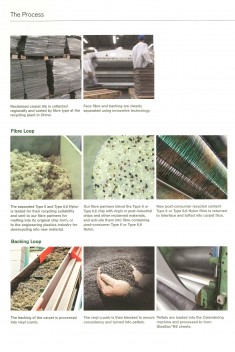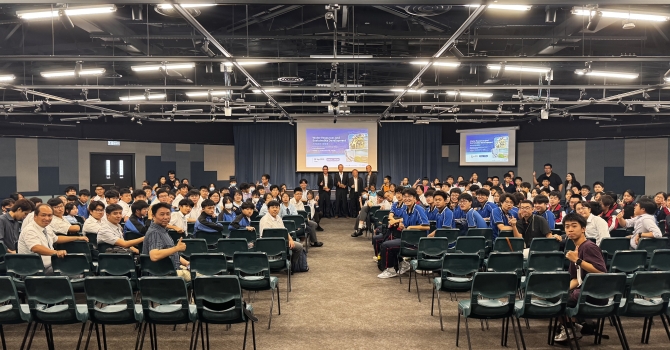Stepping into the library, Leaving Footprint on Greenhouse Gas Free Carpet
When you buy a product, have you thought about the greenhouse gas emissions for a full life cycle including raw materials, manufacturing, transportation, storage, installation and disposal? Customers are now demanding more transparent environmental information from companies to understand their products’ impact on the environment.
We were excited to learn that the HKUST library has taken purchasing to the next level. When they recently replaced 1,000 meters of old carpeting in the entry lobby, they chose “Cool Carpet” from a leading company called Interface for the re-carpeting job. Cool Carpet is not just a product; it is a whole program. First, the program ensures that the new carpets will cause no harm by offsetting all the greenhouse gases (GHG) associated with the manufacturing, maintenance and end of life management of the carpet tiles. The library re-carpeting project resulted in the retirement of 14 tons of verified greenhouse gas emission reduction credit associated with the entire life cycle. In other words, no additional global warming GHG’s were released into the atmosphere as a result of our carpet purchase and use.
In addition, the company has a Mission Zero® goal of zero environmental footprint to be achieved by eliminating dependency on oil. Nylon is a major component in modern carpets, typically derived from oil and is non-biodegradable. Therefore, Interface developed ReEntry, a carpet recovery program that accepts all used carpets (even those from different manufacturers) for conversion into raw materials for use in the production of new products. Through collaboration with recycling partners, the fibers can be separated cleanly from the backing and allow the company to recycle the fiber and backing. Plastics that cannot be used for their products are distributed to other industry suppliers for re-use in material streams. The program dramatically reduces the amount of virgin or raw materials taken from the earth while diverting used carpet away from landfills. Globally, it is estimated that around 2.2 billion kilograms of carpet are thrown away each year, this carpet recovery program has kept 118 million kilograms of carpet out of landfill since 1994.
Edward F Spodick, IT and Services Infrastructure Manager from HKUST Library told us, "The Library has used carpet from this vendor in several projects, as their quality and durability are excellent and the pricing was very competitive. As part of the planning for the 25th Anniversary Exhibition and the installation of the new entry gate system, the Library planned to replace the old carpet in the ground floor Gallery. When we approached the carpet vendor about making the arrangements, we asked if there was any way the older carpet could be reused or recycled, and they informed us that the carpet manufacturer (Interface) had recently established a regional recycling capability for carpeting. We are extremely pleased that this could be arranged and that we would no longer be adding to Hong Kong's landfills with every carpet project."
If your office or home requires new carpet installation in the future, consider eco-friendly products that can reduce our impact on the environment.




